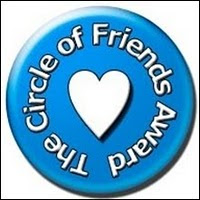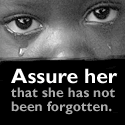'The First Christianity' is episode one from the series 'A History of Christianity: The First Three Thousand Year ,' which is based on the book
,' which is based on the book with the same name as the series title. This very informative DVD (the first in the series) is hosted by Diarmaid MacCulloch, a Professor of the History of the Church at the University of Oxford (since 1997) and Fellow (formerly Senior Tutor) of St Cross College, Oxford (since 1995).
with the same name as the series title. This very informative DVD (the first in the series) is hosted by Diarmaid MacCulloch, a Professor of the History of the Church at the University of Oxford (since 1997) and Fellow (formerly Senior Tutor) of St Cross College, Oxford (since 1995).
Here is the video trailer for this series :
:
Q: A History of Christianity corrects several misconceptions regarding Christianity’s past and traditions, beginning with the earliest days of the fledgling religion. How does the true history of Christianity’s origins differ from the version most of us know?
A: Today, Christianity is seen as a Western faith. Indeed, many in the Muslim world would see Western lifestyles as Christian lifestyles. But Christianity is not by origin a Western religion. Its beginnings are in the Middle East, where there still exist churches which have been Eastern since the earliest Christian era. For centuries, Christianity flourished in the East, and indeed, at one point, it was poised to triumph in Asia, maybe even in China. The headquarters of Christianity might well have been Baghdad rather than Rome, and if that had happened, Western Christianity would have been very different. The story of the first Christianity tells us the Christian faith is, in fact, hugely diverse with many identities. The history of Christianity has been the never-ending rebirth of a meeting with Jesus Christ, the resurrected son of God. For some, like the Oriental and Orthodox churches, the meeting has been through ritual and tradition, or the inner life of the mystic. For Western Catholics, through obedience to the Church. In Protestant churches, through the Bible. And it’s the variety that is so remarkable in Christianity’s journey. It’s reached into every continent and adapted to new cultures. That’s the hallmark of a world religion.
Q: Why does Christian history fascinate you?
A: When I was a small boy, my parents used to drive me around historic churches searching out whatever looked interesting, but soon, they realized they had created a monster. The history of the church became my life’s work. For me, no other subject can rival its scale and drama. For 2,000 years, Christianity has been one of the great players in world history, inspiring faith but also squalid politics. It is an epic story starring a cast of extraordinary people—from Jesus himself and the first apostles to empresses, kings, and popes, from reformers and champions of human conscience to crusaders and sadists. Religious belief can transform us for good or ill. It has brought human beings to acts of criminal folly as well as the highest achievements of goodness and creativity. I will tell the story of both extremes. Christianity has survived persecution, splits, wars of religion, mockery, hatred. Today there are two billion Christians, a third of humanity—Protestant, Catholic, Orthodox, Pentecostal, and many more. Deep down, the Christian faith boasts a shared core—but what is it? This is something I wanted to explore on a truly global scale.
Q: Your search for Christianity’s true history begins with a visit to the Church of the Holy Sepulcher in Jerusalem. Why does this location tell us about the Christianity’s global roots?
A: The Church of the Holy Sepulcher is said to have been built where Jesus was crucified and buried. At its heart is what’s believed to be his tomb. The church built around the tomb of Jesus is the starting point for a forgotten story, a story that may overturn your preconceptions about early Christianity. Pride of place in this building goes to two churches—the Greek Orthodox church and the Roman Catholic church. It’s true that Orthodoxy and Catholicism dominated Christianity in Europe, in the West, for its first 1,500 years. But as you walk around the edges of the church, you can’t fail to notice other curious little chapels. They’re not Western or European. They’re Middle Eastern and African, and they tell a very different story about the origins of Christianity. Around the back of Jesus’ tomb is Egypt’s Coptic church. There are plenty of other churches at this location, but you need to know where to look: the Syriac Orthodox church, the Ethiopian Orthodox Church, to name a few. Many versions of Christian history would make these churches unorthodox, yet they are far older than better known versions of Christianity like Protestantism. It’s easy for tourists to dismiss these ancient churches as quaint or even irrelevant. But that would be a big mistake.
Q: What are some general differences between the expansion ofWestern and Eastern Christianity?
A: In the West, Christianity became the religion of an entire empire. This meant the end of persecution. It brought power and wealth. It gave the Christian faith a chance at becoming a universal religion. In theory, it embraced Christians in the Eastern Empire as well as in the West.
But in the east, many Christians were unimpressed by the new alliance—even hostile. At stake were fundamental disagreements about the direction the faith should take. Jesus had told people to abandon wealth, not to ally with the rich and powerful. It was Eastern Christians in Syria who led the way, showing Western Christianity a pattern for spiritual life. We call this pattern monasticism, a way of life involving isolation from the world, austerity, and suffering. The expansion of expansion of Eastern Christianity has often taken place apart from any empire. It has often been a religion of dialogue, not conquest.
My Review
I learned a lot from this DVD, and was intrigued by what Professor MacCulloch revealed about the history of Christianity. My only concern is that he is a little too sympathetic to Islam, in my opinion. I wasn’t necessarily surprised by that, considering that he does live in Great Britain, and there is a large population of Muslims there. He seemed to consider them to be equal; in fact, he stated:
“There is more in common than you think between Islam and Christianity.”
That is certainly an opinion, and subject to interpretation, but I personally do not agree with that statement.
I also take issue with a comment he made on the DVD:
“Later leaders forced Christians to wear distinctive yellow clothing. Much later, European Christians would do that to Jews.”
Assuming that he is referring to the yellow Star of David that Jewish people were forced by the Nazis to wear during World War II, I certainly take issue with Professor MacCulloch referring to Adolf Hitler and the Nazis as ‘European Christians.’ They were not Christians if Christians are defined as followers of Jesus Christ.
I watched this DVD with the spirit of discernment with which we are to interpret all media, and came away finding it informative yet flawed. Professor MacCulloch is a professor of history, not a professor of theology, so he is viewing Christianity and its history through his own worldview – just as in fact I am doing while viewing it. Overall, I did find it to be valuable.
This DVD was produced by Ambrose DVD and provided by B&B Media Group for review purposes.




























.jpg)







No comments:
Post a Comment